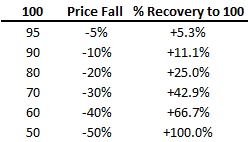Most investors/traders do so on their own considering themselves immune to the typical mistakes repeatedly made by the vast majority. To help you avoid these pitfalls we look at some of the most common and costly mistakes to help you maximise your profits and trading lifetime

